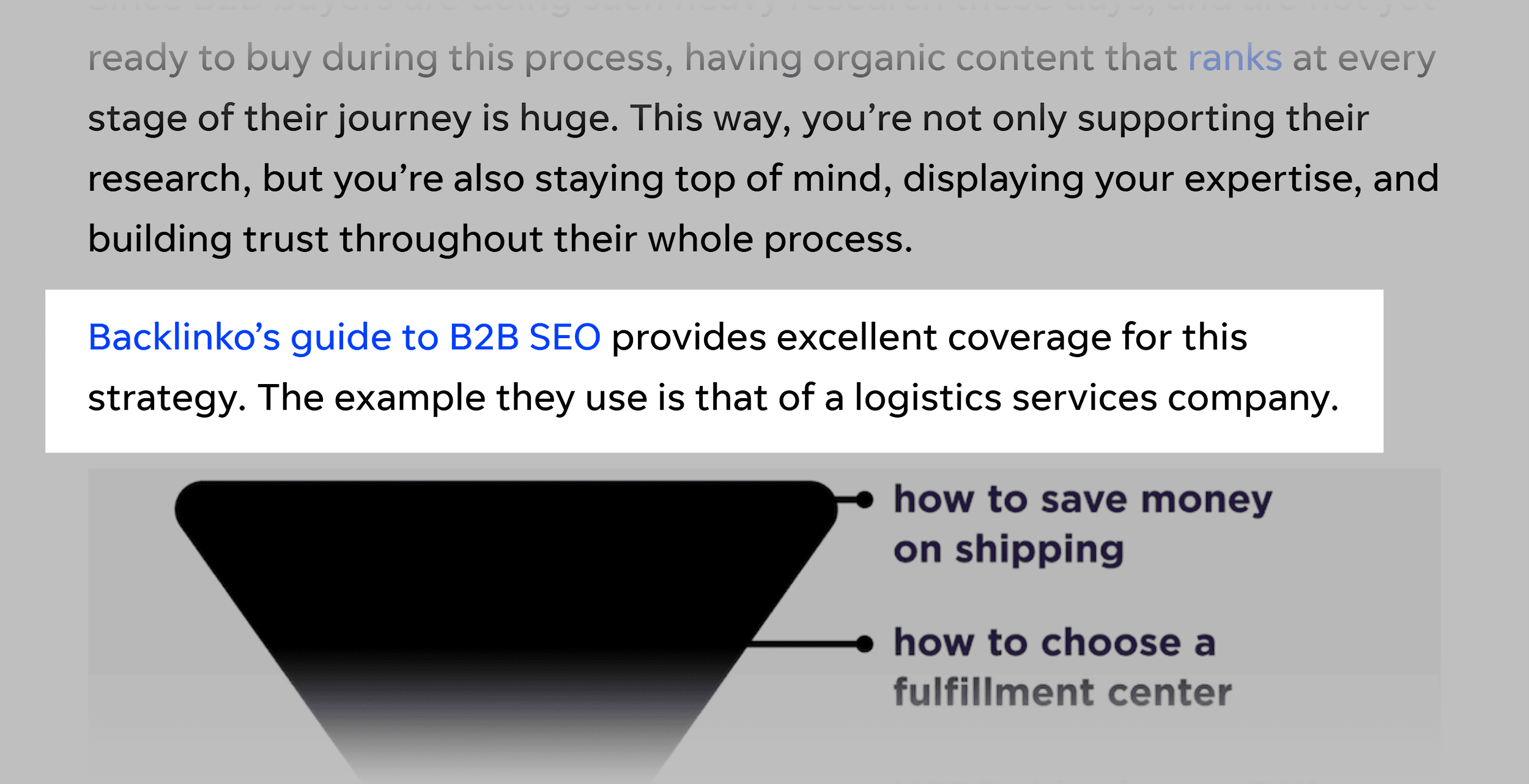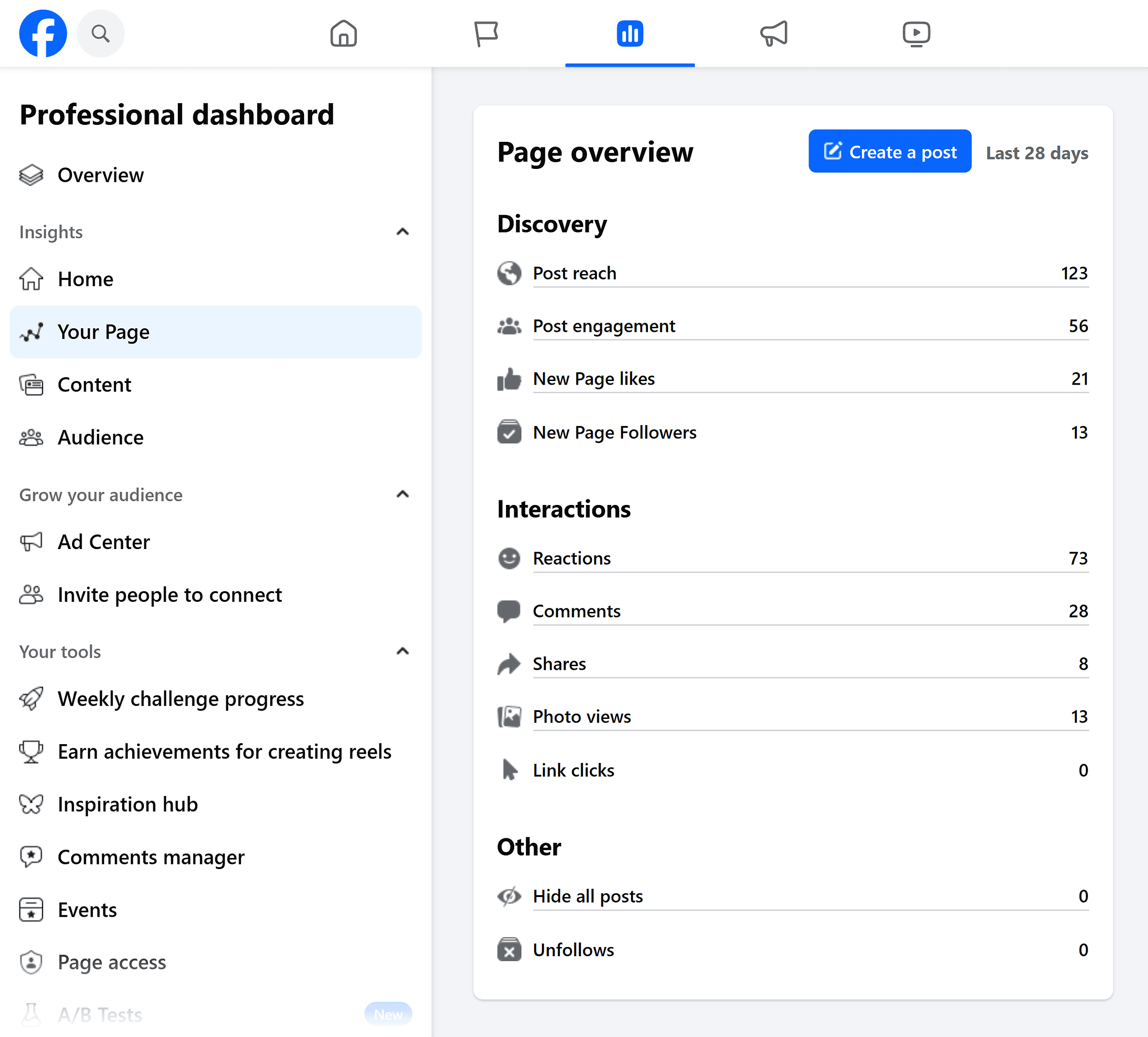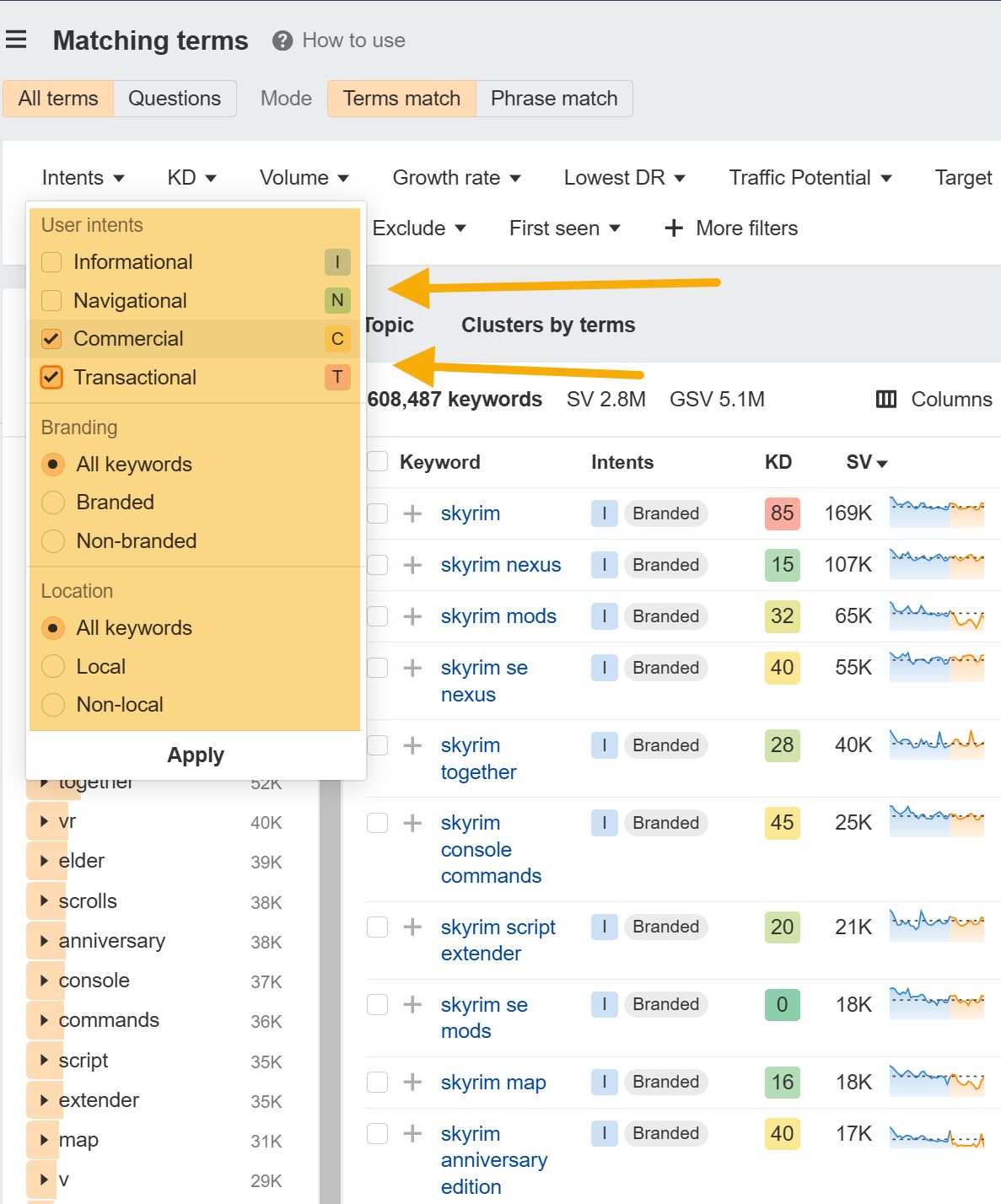Content distribution is the process of sharing, promoting, and repurposing your content across a variety of marketing channels. These may include social media platforms, email marketing, paid ads, and other websites.
For example, Backlinko distributes content by sending new blog posts to email subscribers each week:
And sharing them on social media:

Content distribution can help you reach a wider audience with each piece of content you create. Leading to more traffic, engagement, and even conversions for your business.
Below, I’ll walk you through the main content distribution channels and the steps you can take to maximize your reach with each one.
The 3 Main Types of Content Distribution Channels
Knowing the differences between owned, earned, and paid channels is key to maximizing your content’s reach.
Within each type, there are individual channels:
| Owned Distribution Channels | Earned Distribution Channels | Paid Distribution Channels |
|---|---|---|
| Websites and blogs | Social shares and mentions | Paid ads |
| Social media accounts | Backlinks | Boosted social media posts |
| Email marketing lists | Forum discussions | Native & sponsored content |
| YouTube Channels | Reviews | Paid content syndication |
Owned Distribution Channels
Owned distribution channels are the ones you own and have control over.
Like your website, blog, and social media accounts.
The good thing about owned channels is you can publish what you want, when you want.
For example:
When Masterclass adds new content to its site, it sends an announcement to its email subscribers.

And when B2B companies like ON24 release new reports, they share them on LinkedIn.

Plus, you can track your performance and results on these channels fairly easily. By using tools like Google Analytics to monitor website traffic and conversions, and social media analytics dashboards to keep track of engagement.

The main downside to owned channels is that your reach is limited to your existing audience. Whether that’s readers, followers, or subscribers.
This is especially true if your company is new and you don’t have much of an audience yet (that’s where earned and paid distribution channels can come in handy).
So if your audience is small, owned channels may not give you much visibility.
Earned Distribution Channels
Earned distribution is when your content “earns” visibility on other people’s channels.
Think social media shares, mentions, backlinks, and reviews.

Earned distribution can instantly expand your reach and boost your credibility. Since it involves other people recommending your content.
However, the visibility you achieve is often temporary. And (obviously) you don’t get to control it.
Paid Distribution
Paid distribution refers to all types of paid ads and platforms that distribute or promote your content for a fee.
These include boosted social media posts, pay-per-click (PPC) ads, and paid influencer promotions.

Paid distribution gets eyes on your content immediately.
However:
It can get expensive. And it’s simply not an option for a lot of content creators.
Plus, as soon as you stop spending, you stop getting results.
How to Build a Content Distribution Strategy: Step-By-Step
A big part of building a winning content distribution strategy is going to be choosing the right channels.
To do that, you first need to know which channels your audience uses.
But before you can even do that, you need to understand who your target audience actually is.
Step 1: Define Your Target Audience
Understanding where your target audience hangs out will make it much easier to choose which distribution channels to use for your content. And it’ll likely make your efforts far more effective too.
Ask yourself the following questions:
Who Is Your Target Audience?
Hopefully you have a decent idea of this already. However, going deeper on the details can make it easier to understand where to focus your distribution efforts.
For example, you should find out details like:
- The age range of your target audience
- Their income and education levels
- Where they are physically located
This information can help you pinpoint the most effective distribution channels to use.
But how do you find this information?
You may be able to use your existing analytics. For example, Google Analytics can tell you where your audience is located, their gender, age, and the languages they speak:

You can likely find this information about your social media audiences too. Like on LinkedIn:

You can use these insights to help you understand which platforms may be best. For example, younger audiences tend to use TikTok more often, while Facebook is ideal for audiences aged between 30-39 and 50-64.
What Content Do They Enjoy?
Understanding what content your target audience enjoys most will help you understand not only where to distribute your content, but also what format to use.
- Does your target audience prefer to learn through visuals?
- Do they like to consume more technical how-to guides?
- Would they rather watch videos than read blog posts?
- Do they prefer short-form or long-form content?
The type of content your audience consumes most will help you understand where to post yours.
For example, short-form videos are best for platforms like YouTube Shorts and TikTok. While a blog or email newsletter would be better for a target audience that prefers to consume longer-form written content.
Who Do They Trust?
Finally, think about who your target audience trusts.
Why is this important?
Because it can help you understand who you might want to partner up with to distribute your content.
This could be through earned channels, like getting backlinks and social shares from websites and accounts that they follow or engage with.
Or it could be through paid channels, like influencer marketing.
Step 2: Choose Your Distribution Channels
Obviously, which distribution channels you can use will depend on your resources, connections, and overall reputation in your industry.
For example, if you have a limited marketing budget, paid channels might be out of the question. And if your website authority is pretty low, it could be tough to drive organic traffic to a new blog.
But resources aside, you also need to choose distribution channels that fit your goals and target audience’s preferences.
Think About Your Goals
Starting with goals, if your primary aim is to drive traffic to your website, you won’t have much luck on platforms that don’t let you add links to posts. Like Instagram and TikTok.
But if your goal is brand awareness, those channels might be a great match.
If you need quick results, and have the budget for it, paid content distribution may be the way to go. Perhaps by working with an influencer that your audience already trusts.
But if you have more time than money, and want to generate sustainable growth, you could use search engine optimization (SEO) to bring organic traffic to your website as an owned channel. Or to earn backlinks from other sources to drive referral traffic (and improve your website’s authority).
This is exactly what we do at Backlinko, and we drive over 14K users every month from referring sites that link back to us.

This is an excellent source of earned distribution traffic.
Follow Your Audience
Next, use the information you found out about your audience in Step 1 to decide which channels are likely best for reaching them.
While demographics like age can help you get a rough idea of where your audience hangs out, there are tools that can tell you exactly which platforms your target audience uses most often.
One such tool is Semrush’s One2Target.
You just enter one of your competitor’s domains into the tool (their audience is likely very similar to yours).
Then head to the “Behavior” tab to see which platforms the audience uses most:

These are likely the platforms you’ll see the best results from when distributing your content.
Step 3: Choose the Right Content for Each Distribution Channel
You don’t need to distribute every piece of content to every channel. Some types of content will perform better on one channel than others.
For example, if you use email marketing, the people on your email list trust your business enough to give you their contact information.
This makes them a good segment to target with sales-focused content.
Why?
Because they’re much more likely to convert than someone seeing one of your social media posts for the first time.
But thought leadership content, or content designed to entertain, might perform well on social media. Where your target audience can share it with their own audiences and grow your brand awareness.
Step 4: Match the Format and Messaging to the Distribution Channel
You’ll often distribute one piece of content across several channels.
But you can’t just use the same format and messaging on every platform and expect it to perform well.
Someone on Instagram (a highly visual platform) is expecting different content from someone on LinkedIn (where written posts are more common).
For the best results, tailor your presentation to each channel.
For example, imagine you’re promoting a blog article titled “How to Get More Backlinks.”
On LinkedIn, you might share a carousel of graphics summarizing the main points from the article. Like this:

And if you were sending it to your email subscribers, you might instead tease them about what they’ll learn by checking out the full article.

Step 5: Create a Content Distribution Calendar
Your content distribution plan likely involves a few different individual channels. And you might have a lot of content (new and old) that you want to distribute.
Keeping on top of this can be tough. So, create a content distribution calendar to help you and your team understand:
- What you’re posting
- Where you’re posting it
- When it’s going live
You can do this with a simple spreadsheet, like our free content calendar template:

Or you can go a step further and use a tool like Semrush Social.
This lets you map out content in advance for multiple platforms, all in one place:

Step 6: Measure and Analyze Your Results
As you distribute content, you want to do more of what’s working, and less of what isn’t.
You can track a variety of metrics to understand your distributed content’s performance. Let’s break them down by channel type.
Owned Channel Metrics
Tracking the metrics for your owned channels is fairly straightforward.
If you’re using your website or blog to distribute your content, key SEO metrics to track include:
- Website traffic
- Conversions
- User engagement signals (like time on page)
You can track all of these using tools like Google Analytics.
It’ll show you how much traffic you’re getting:

How much of that traffic is converting:

And how your visitors engage with your content:

If you’re using social media, you’ll be able to track similar metrics. Although engagement (likes, comments, shares etc.) will also be worth tracking.
The specifics will depend on the platform. For example, here’s how it looks on Facebook:

And this is what it looks like on LinkedIn:

Finally, you’ll also get similar insights with many major email marketing platforms if that’s one of your distribution channels.
In this case, metrics like opens and clicks are the ones to track:

Earned Channel Metrics
Tracking results from earned channels can be a bit tougher than for owned ones. Although there are tools that help you track your backlinks and even mentions of your brand across the internet.
Like the Brand Monitoring app:

Semrush’s Backlink Analytics tool can help you monitor your backlink profile:

To monitor your referral traffic (traffic from people linking to your content), use the “Traffic acquisition” report in Google Analytics.
You’ll need to add a filter for “Session Default Channel Group” and select “Exactly matches” and “Referral.”

Then, use the drop-down to change “Session primary channel group” to “Session source”:

This will show you all the sites sending referral traffic your way:

Paid Channel Metrics
If you’re using paid ads to distribute your content, you can likely track metrics like impressions, clicks, and conversions within the platform.
Here’s how this might look in Google Ads, for example:

If you’re writing sponsored content on another website, tracking referral traffic in Google Analytics might be the best way to monitor your performance.
And if you’re working with influencers, you can use parameters in the URLs they share to attribute any traffic or conversions to what they post.
Get Started with Content Distribution
Content distribution is not a one-and-done thing. It can boost the performance of individual pieces of content, of course. But for best results, make distribution part of your regular content workflows.
Following a content distribution strategy can skyrocket your content marketing results.
If you want to learn how to build the right foundations for success, check out our in-depth guide to content marketing. And to streamline your efforts, you’ll also want to arm yourself with the right content marketing tools.
Content Copyrights Belong to The Author. All Rights Reserved.
We're A Dallas Digital Marketing Agency That is Experts At Social Media Marketing, Website Design and Emarketing and Promotion.




